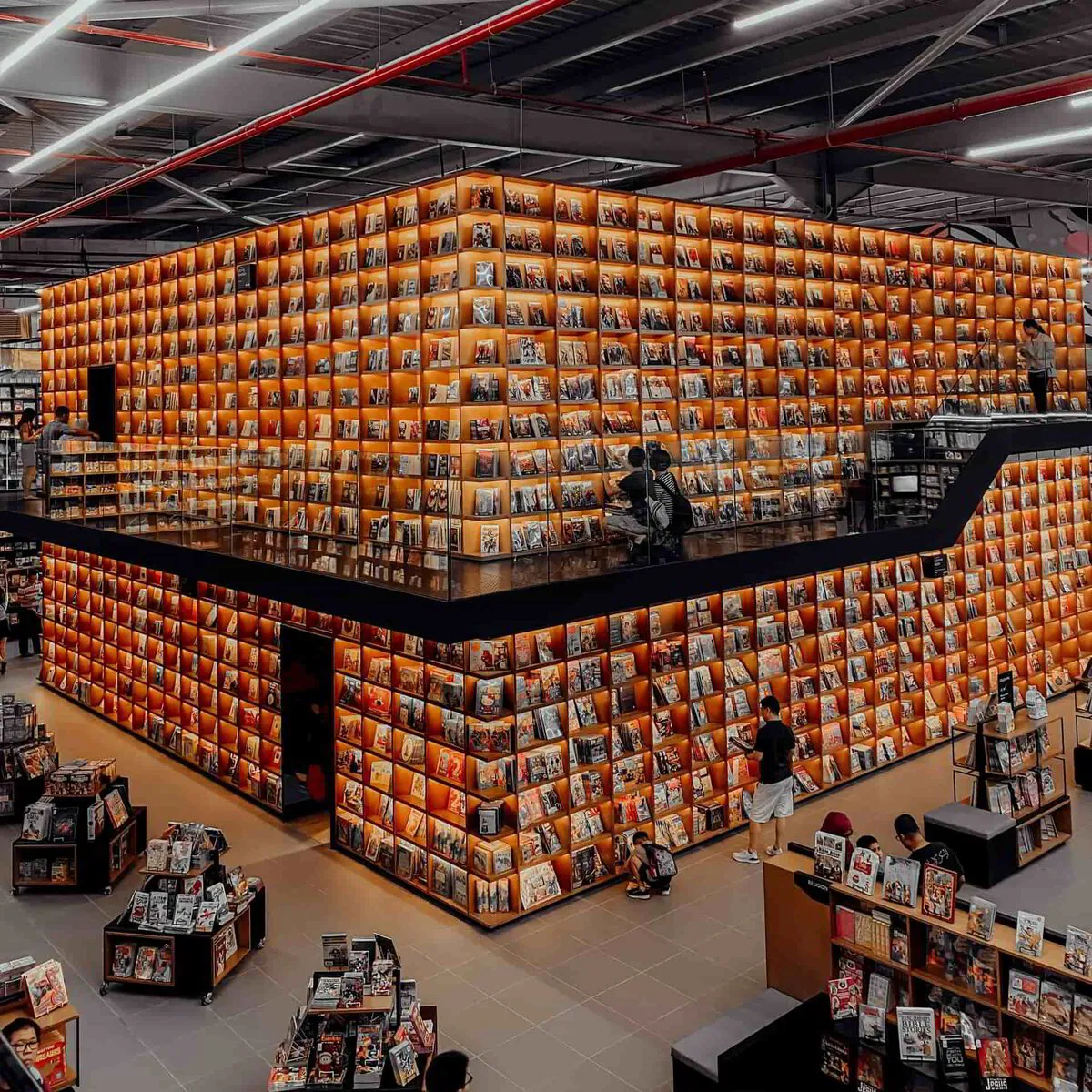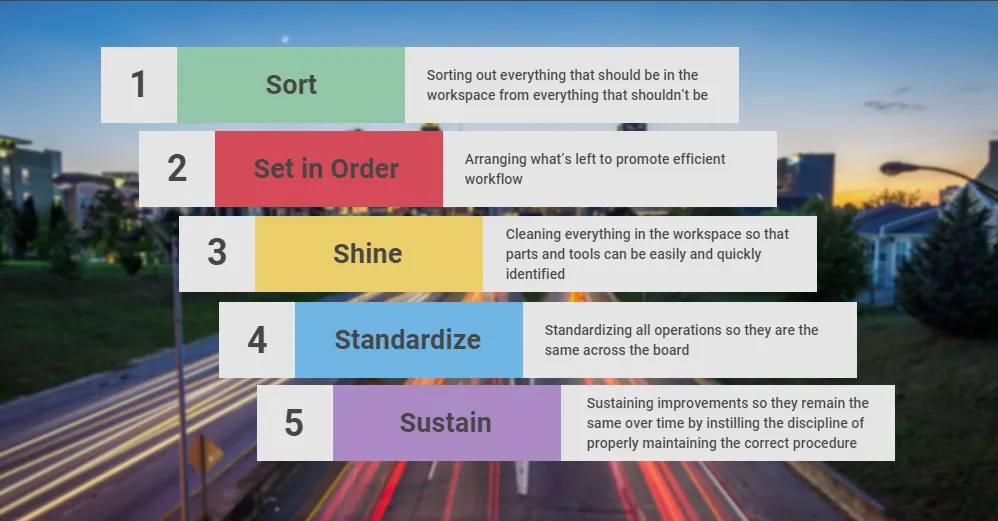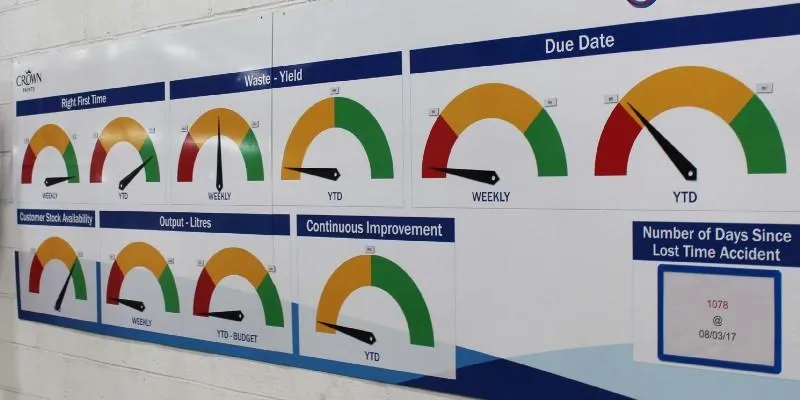Do you have a problem with a messy workspace? Do you feel there is a lot of waste hiding in your workplace as well?
Our last article discussed the types of waste that exist so you can work on eliminating them from your workplace.
One of the critical issues with removing waste is firstly, the ability to recognize it.
Waste can only be recognized when you have trained your people and yourself to see when something is not right or not working correctly.
HVAC service techs are already naturally good at this through experience with troubleshooting issues. You can deal with this through Visual Management.
Visual Management (sometimes called "Visual Factory" or "Visual Thinking") is a visual information-sharing system that enables an individual (even those unfamiliar with a specific work area) to immediately recognize the required standard as well as any problems, waste, or deviations from the norm.
A great example of this is the road. Would you feel safe driving down a busy highway without safety signs, traffic lights, and without any standards for yourself and other drivers? You would immediately recognize the dangers.
This is a form of Visual Management.
Visual Workplace is made up of 3 important elements:
Visual Order
Visual Display
Visual Controls
Why do we want to do this? There are many key benefits: reducing search times, increasing safety, improving quality, reduces waste, all of which increase process speed and productivity.
An excellent way to start is through the implementation of 5S.
Did you know that over 50% of human brain function is dedicated to finding and interpreting visual data? So, let's make the most of it!
Visual Order with the 5S System
Improving your visual work environment starts with 5S. 5S is the foundation for all operational improvements and is the basis for operational excellence.
It is widely used in lean manufacturing with great success. 5S is the process of creating and maintaining an organized, clean, safe workspace and is the key to workplace organization and housekeeping.
This is also known as Visual Order.
5S should be implemented before all other methods because it can quickly fix a problem or provide a baseline for processes that may not have been standardized as of yet.
There are five elements to 5S.
Sort
- Sorting out everything that should be in the workplace from everything that shouldn’t be. Remove everything considered waste.
Set in Order
– Arranging what’s left to promote efficient workflow. “A place for everything and everything in its place.” Mark and label all locations clearly. This makes it easier for anyone to find and return items to their proper location in the sequence used.
Shine
– Cleaning everything in the workplace so that parts and/or tools can be easily and quickly identified.
Standardize
– Standardize all operations, so they are the same across the board. This helps to maintain and improve on the first 3Ss.
Sustain
– Sustaining improvements, so they remain the same over time by instilling the discipline of properly maintaining the correct procedure.
Some companies use 6S. The +1 is Safety. Safety is used to highlight and address possible issues that may result in someone getting hurt. For our purposes, we believe that safety is inherent in everything you do, so we do not mention it separately.
Further, in the series on Lean Management, we have outlined 5S implementation in detail with an easy step-by-step guide on integrating 5S in your visual workplace.
We have also provided the tools you need to standardize and sustain 5S.
Improving Your Visual Workplace
Once 5S is established, you can focus on Visual Management.
There are 2 vital elements to visual management within an effective visual workplace: visual standards & displays; and visual control.
⭐Visual Standards & Display
Visual Standards & Displays communicate vital information but do not necessarily control people or machinery.
Instead, it relays visual information or data to people to help detect and prevent abnormalities, which can turn into one of the wastes as previously discussed.
An example of visual devices can be a written work instruction with photos on how to complete a work sequence.
This would be conveniently located close to the operator for easy recognition.
Another example of visual devices may be a job board at a service company showing the open jobs for that day that help the service managers manage their technicians.
Another associated board could be used to display performance metrics versus their targets.
⭐ Visual Controls
Visual Controls adds an extra layer to a visual standard to ensure errors do not occur. It communicates information so that activities are controlled based on that standard.
A great example of control is traffic lights. Traffic lights control traffic, maintain a steady flow, and are easily recognizable.
Another example is tool shadow boards that only allow the specific tool to be placed in the correct spot for easy recognition.
The key to this is to make use of the process that is self-explaining.
Enhance Your Visual Workplace with Visual Management
Visual Management helps you standardize and sustain operational improvements in your workspace until they become embedded as habits and part of your visual workplace's work culture.
With a visual workplace, the knowledge no longer belongs to a manager, supervisor, or individual.
Everyone involved in a visual workplace is now part of the company’s knowledge pool on managing the business or workplace better.
This plays a vital role in empowering employees to manage their tasks.
Knowledge is no longer the power to be held by a few; instead, it’s shared across the company.
Once successfully implemented, a visual work environment is self-regulating and self-explanatory.
Managers and supervisors do not need to get involved in every task. It frees them to work more on the business rather than within it.
Further, into the series on Lean Management, we will provide you with a step-by-step guide and simple tools to implement and manage a visual workplace pertinent to you.
These are powerful tools to improve your business through continuous improvement.
If you’ve recognized that you might benefit from going Lean, check out our article articles in the lean series.
We also have an easy-to-follow step-by-step guide on 5S to help skilled trades service companies go Lean!
This article was written by Russell Jones
VP of Operations @ Phyxter and Operational Excellence Specialist
Click here to connect with Russell on Linkedin
Read the next article in our Lean Series: Using Standardized Work






